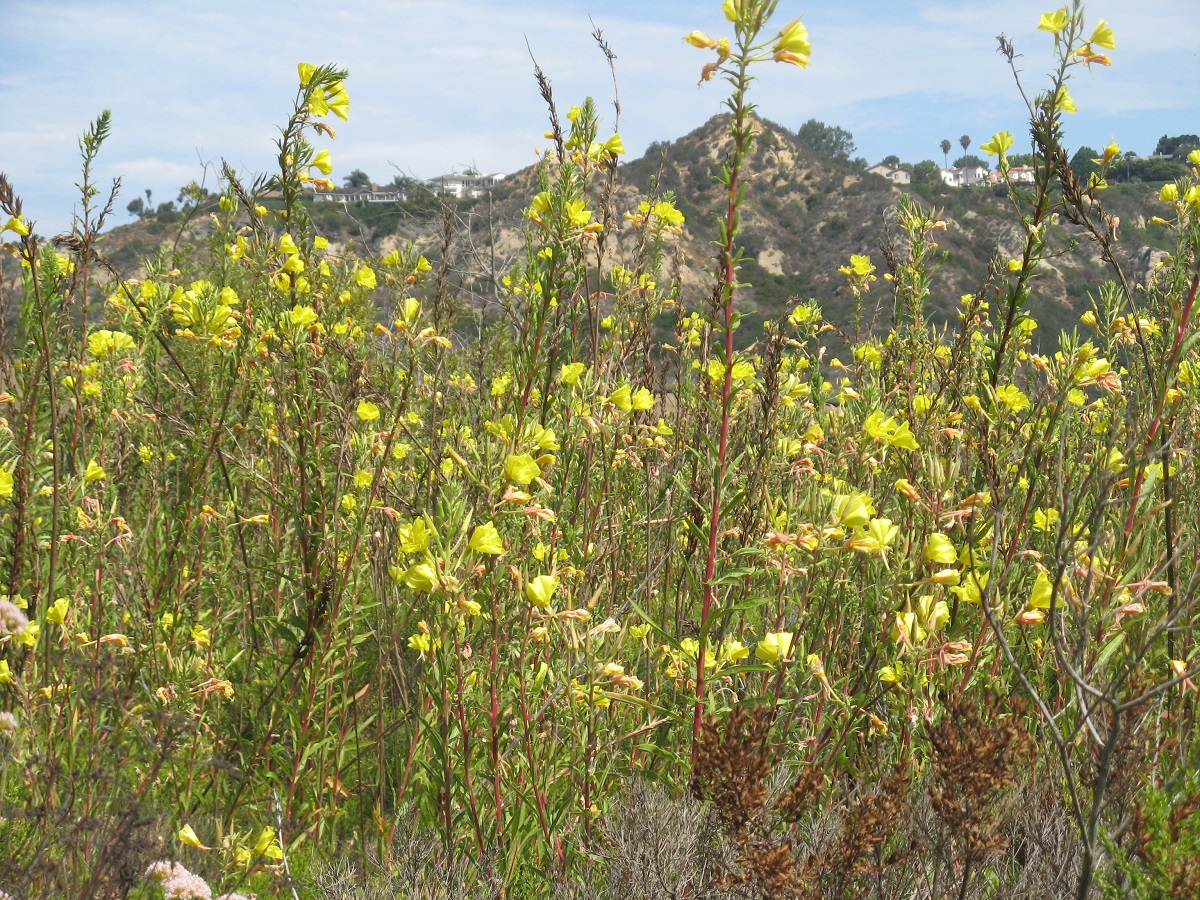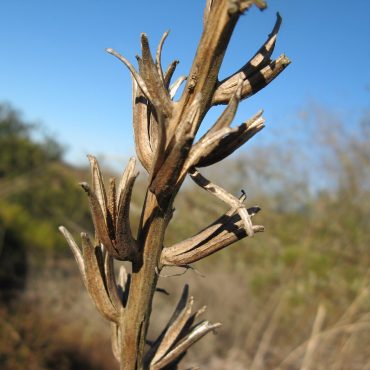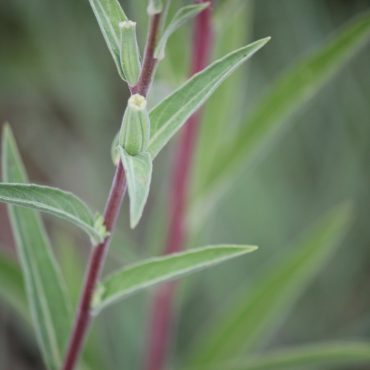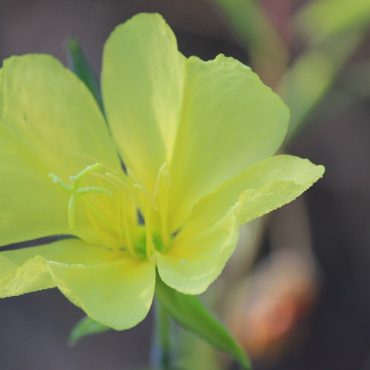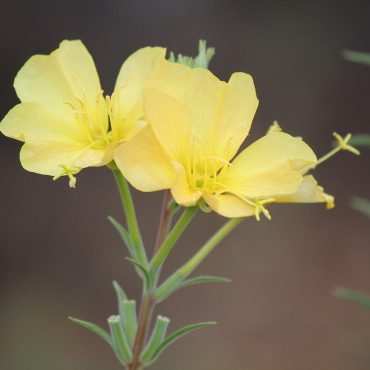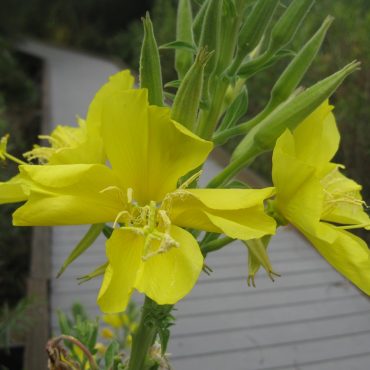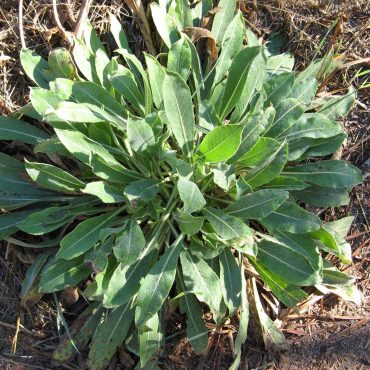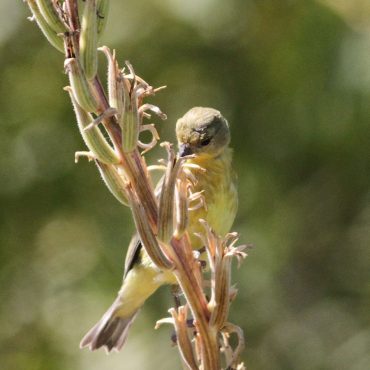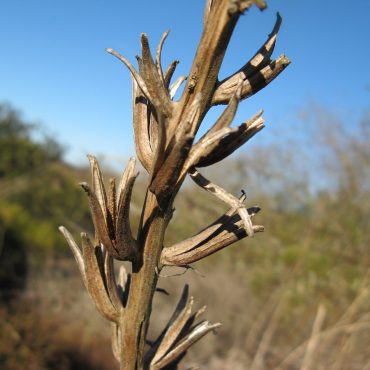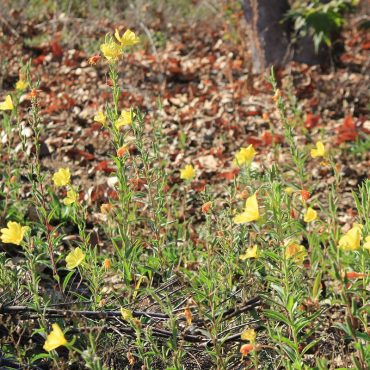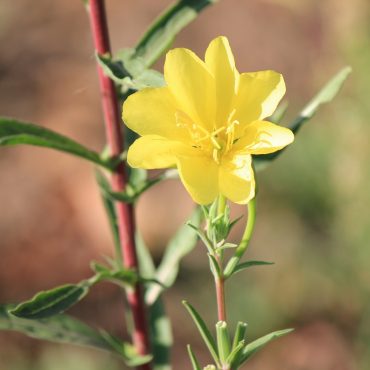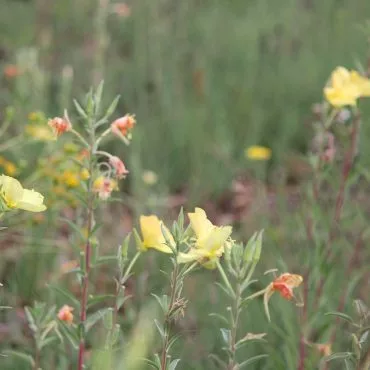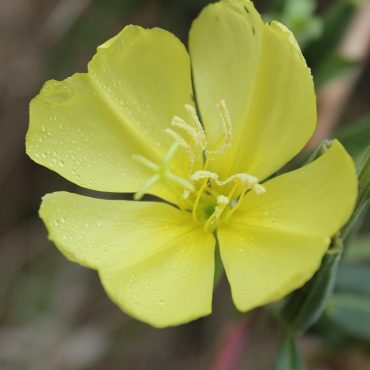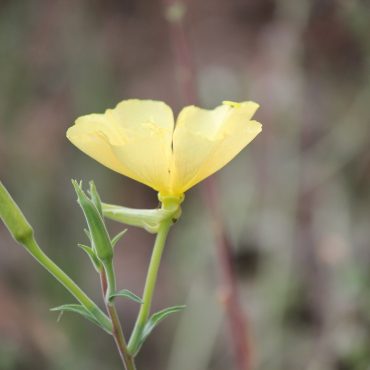Hooker’s evening primrose is a tall herbaceous plant with one or more upright, unbranched stems, often less than 6 ft. (2 m) long, although there are plants in the East Basin that have reached ten feet (3 m).
Hooker’s evening primrose is usually biennial, completing its life cycle in two growing seasons. The first year, it produces a large fleshy taproot and a basal rosette of leaves. Flowers and fruits are produced during the second year of growth. In our region, it may be a short-lived perennial, flowering for more than one year.
Leaves in the basal rosette are 12 inches (30 cm long), usually widest toward the outer end and acute at the tip. From the basal rosette emerge stout, reddish stems, which are covered with short, soft hairs. Stem leaves look like tongues and are somewhat smaller than those in the rosette. They lack a petiole and clasp the stem directly, growing in a spiral around it.
The main blooming period of Hooker’s evening primrose occurs from May through September,1 but isolated flowers may be produced throughout the year. They are found singly along the stem, opening sequentially from the bottom upward. Only one to a few flowers are in bloom at any one time. They open at dusk and wither early the following day. Hooker’s evening primrose produces showy yellow flowers that are 3 inches (8 cm) across and turn orange with age. They are radially symmetrical with four heart-shaped petals and four smaller sepals that fold back away from the petals, often fused in pairs. The flowers are bisexual, with eight stamens and one pistil with an X-shaped stigma, that extends beyond the petals and stamens. The ovary is below the flower (it is “inferior”).
The maturing fruits are cylindrical green capsules that turn woody when mature, splitting lengthwise to release tiny angled seeds that ripen from late summer into fall.

